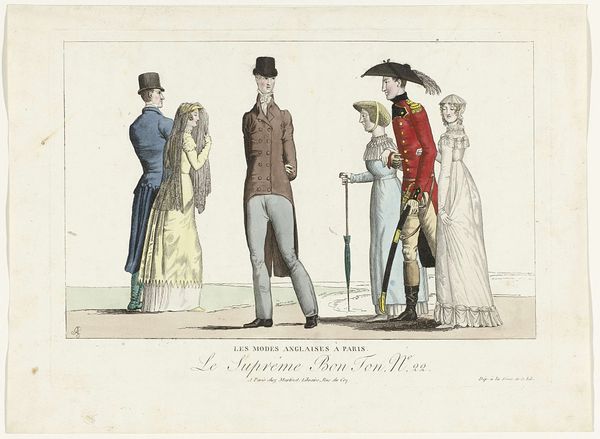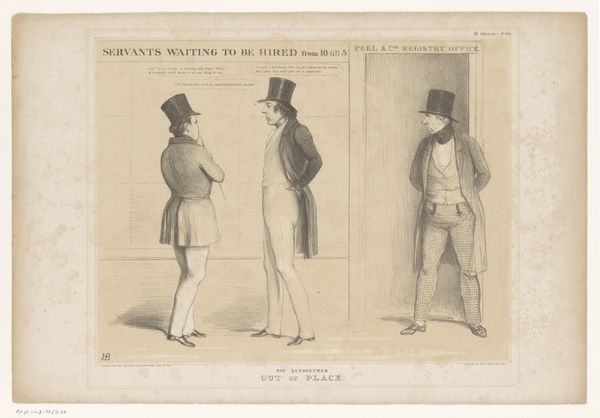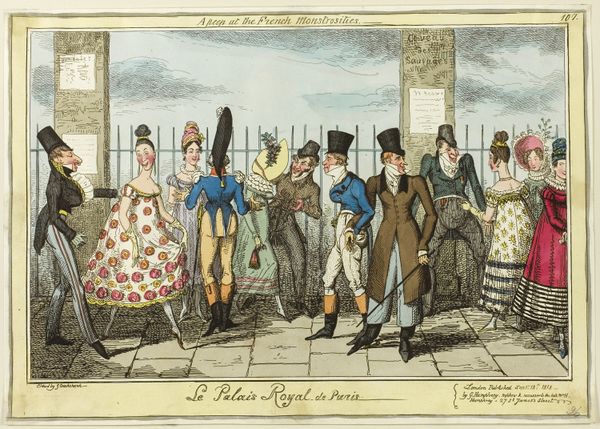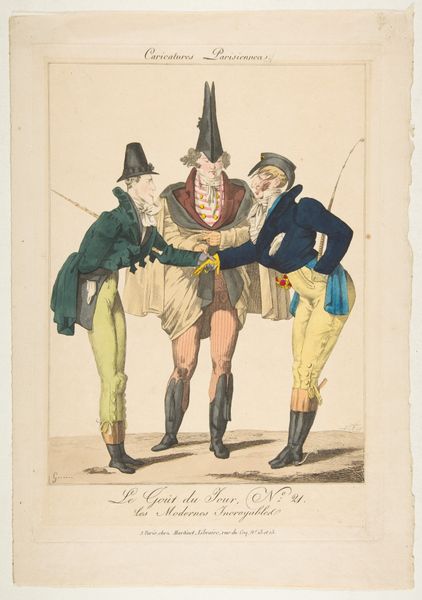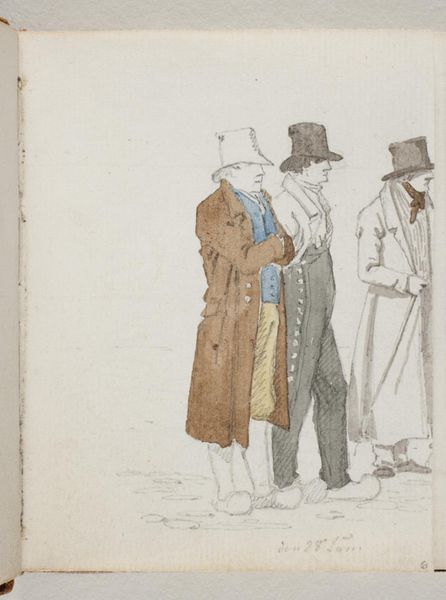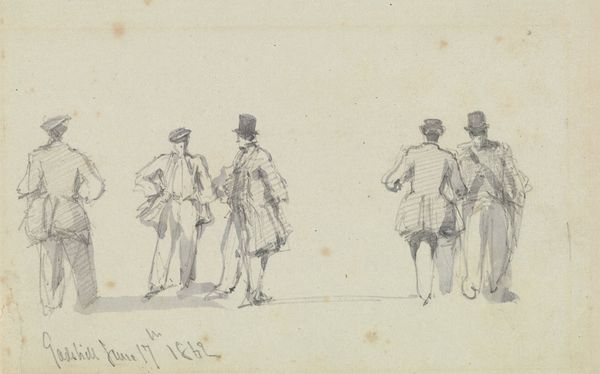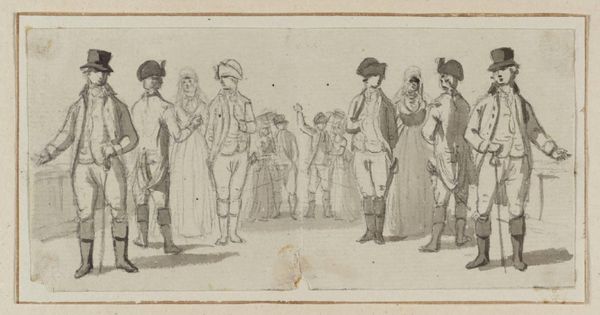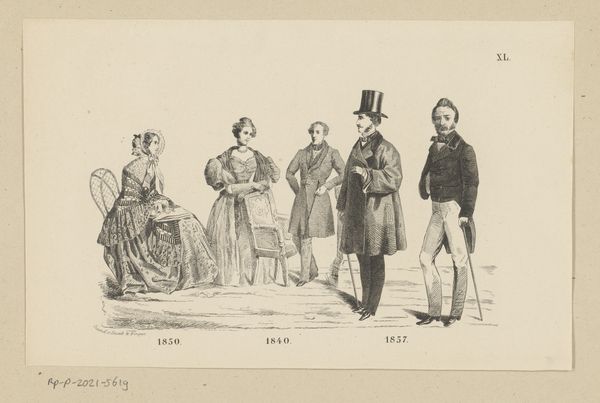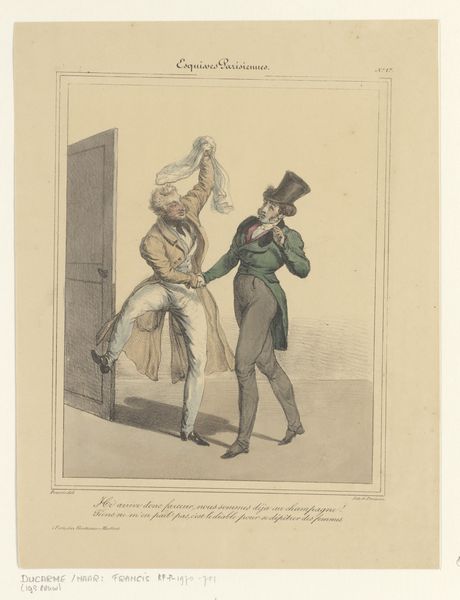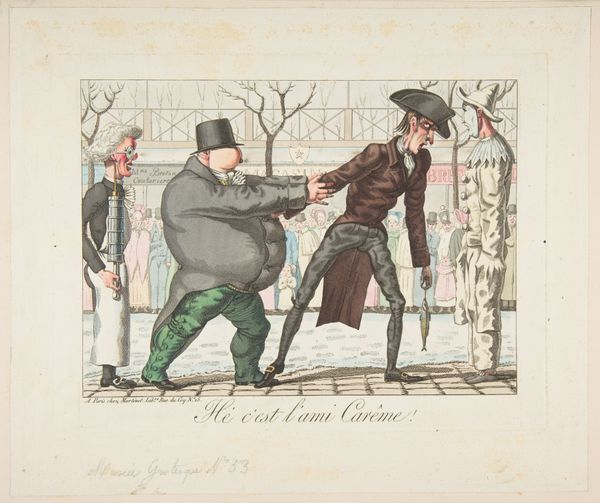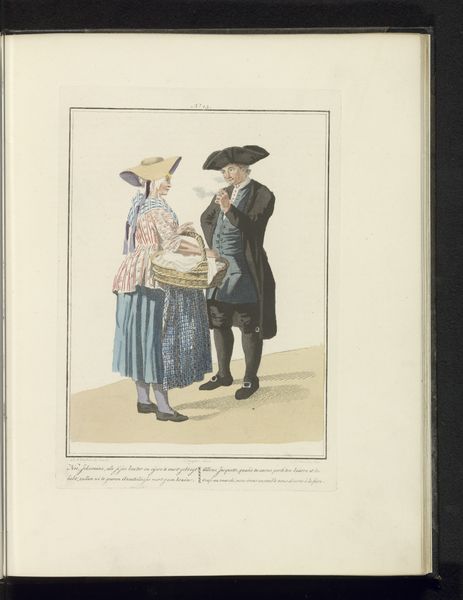
Le Suprême Bon-Ton, Caricatures Parisiennes, 1810-1815, No. 19 : Les nouveaux habits a longue taille 1800 - 1815
0:00
0:00
drawing, print, etching, paper, ink
#
portrait
#
drawing
# print
#
etching
#
caricature
#
figuration
#
paper
#
historical fashion
#
ink
#
romanticism
#
genre-painting
Dimensions: height 212 mm, width 278 mm
Copyright: Rijks Museum: Open Domain
Editor: Here we have a print titled "Le Suprême Bon-Ton, Caricatures Parisiennes, 1810-1815, No. 19 : Les nouveaux habits a longue taille," created anonymously sometime between 1800 and 1815. It's an etching made with ink on paper. I find it really humorous—the exaggeration of the figures is just delightful. What strikes you about this piece? Curator: This caricature speaks volumes about the socio-political climate in early 19th-century Paris. The exaggerated styles are a commentary on the excesses of fashion and, more broadly, the elite class. The French Revolution, not long past, aimed to dismantle such displays of extravagant wealth. How does the image function as a piece of social critique? Editor: I see what you mean! It’s not just funny; it's pointing a finger. The new fashions—the 'habits a longue taille' or long-waisted coats—are presented as absurd. Curator: Precisely. Think about the role of prints like these in public discourse. Before mass media, satirical prints were a powerful tool for shaping public opinion and challenging the status quo. They offered a visual language to critique authority and societal trends. What do you think was the target audience for such imagery? Editor: Probably the middle class and maybe even some members of the aristocracy who had a sense of humor about themselves. It feels like a very public form of satire, something meant to be shared and discussed. Curator: Absolutely. And considering it’s in the Rijksmuseum today, its function has shifted from social commentary to historical document. We now analyze it not only for its aesthetic value but also as evidence of the political and social tensions of its time. The print's presence in a museum legitimizes it as a site of knowledge production, even if its original intention was subversive. Editor: It's fascinating to think about how the same image can have such different meanings depending on the context and time period. It gives me a new appreciation for considering art’s public role. Curator: Indeed. It reminds us that art never exists in a vacuum and always interacts with, and often shapes, the world around it.
Comments
No comments
Be the first to comment and join the conversation on the ultimate creative platform.
